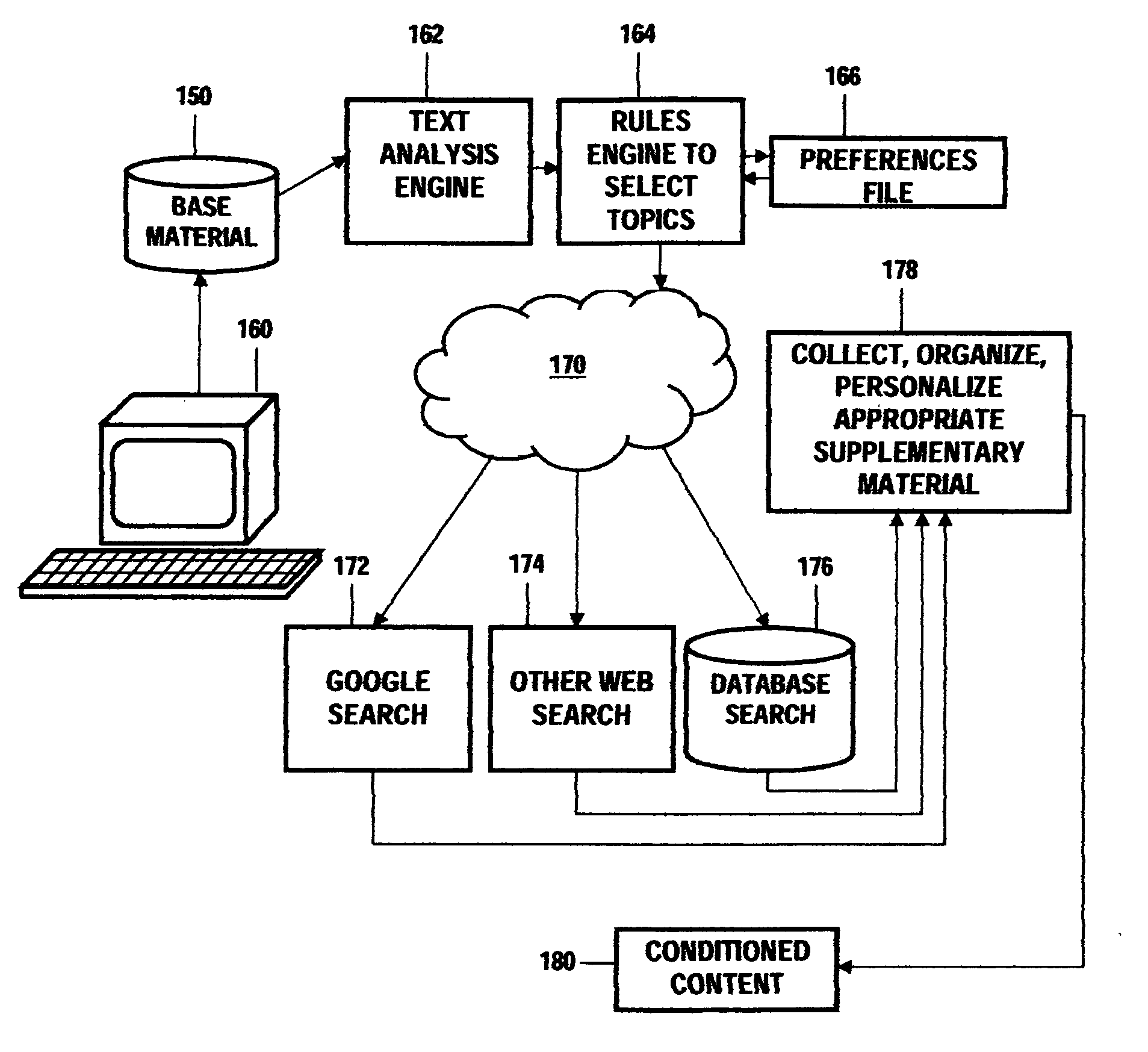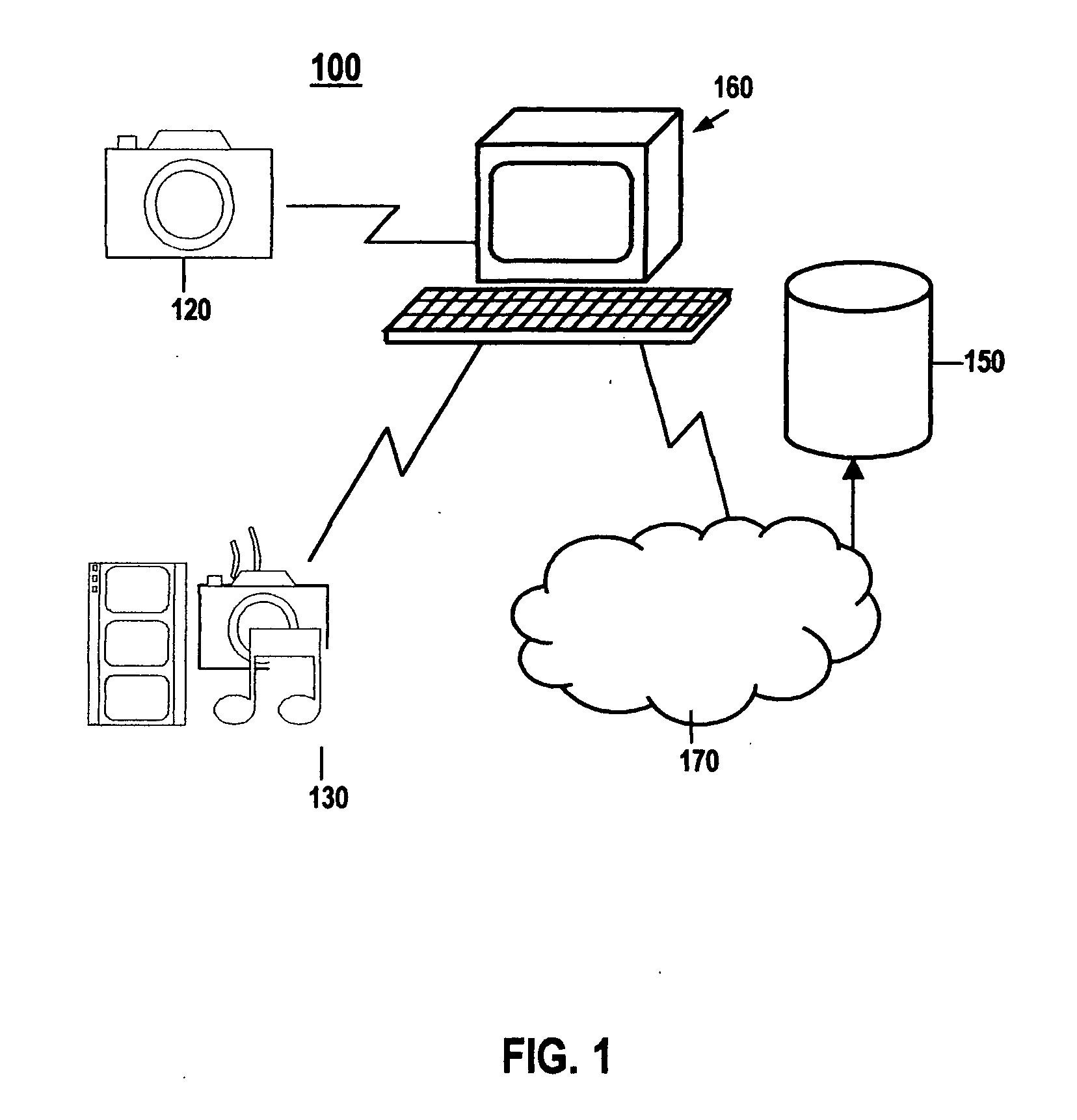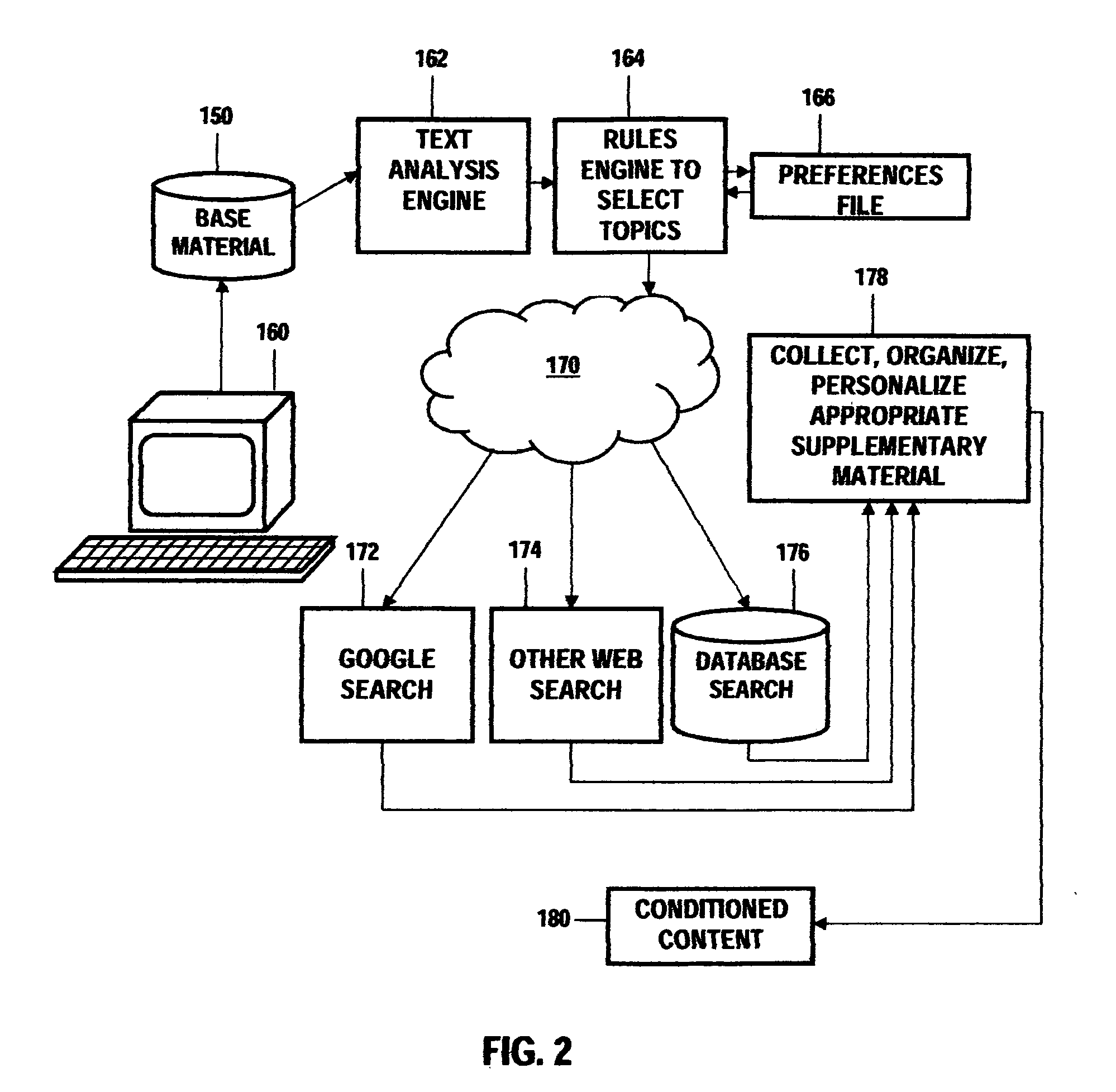Method and system for personalized content conditioning
a content conditioning and content technology, applied in the field of personalized content conditioning, can solve the problems of difficult to keep supplementary material current, difficult to find and prepare supplementary material as to prepare original material, and expensive resources for authors and editors, so as to reduce the time necessary to learn, enhance learning experience, and improve the effect of education and news processing
- Summary
- Abstract
- Description
- Claims
- Application Information
AI Technical Summary
Benefits of technology
Problems solved by technology
Method used
Image
Examples
Embodiment Construction
[0033] Our invention includes a method and system for using natural language techniques, analytics, and etc. to extend content based on preferences associated with a user or an intended audience. This can be used as an aid for the content creator in constructing the materials, including base materials and personalized supplementary materials. In a preferred embodiment, this can further be personalized to the student with an individual set of materials.
[0034] In our invention, once the base material is created or identified, the inventive system analyzes the base material to determine important or significant elements within the base material. This can best be understood by the following example: if the material is an essay on current events in United States politics, the most important elements may be determined to be 1) political candidates currently involved in a campaign election for office, 2) a legislative bill under discussion and 3) a scandal. In our invention, a subset of t...
PUM
 Login to View More
Login to View More Abstract
Description
Claims
Application Information
 Login to View More
Login to View More - R&D
- Intellectual Property
- Life Sciences
- Materials
- Tech Scout
- Unparalleled Data Quality
- Higher Quality Content
- 60% Fewer Hallucinations
Browse by: Latest US Patents, China's latest patents, Technical Efficacy Thesaurus, Application Domain, Technology Topic, Popular Technical Reports.
© 2025 PatSnap. All rights reserved.Legal|Privacy policy|Modern Slavery Act Transparency Statement|Sitemap|About US| Contact US: help@patsnap.com



